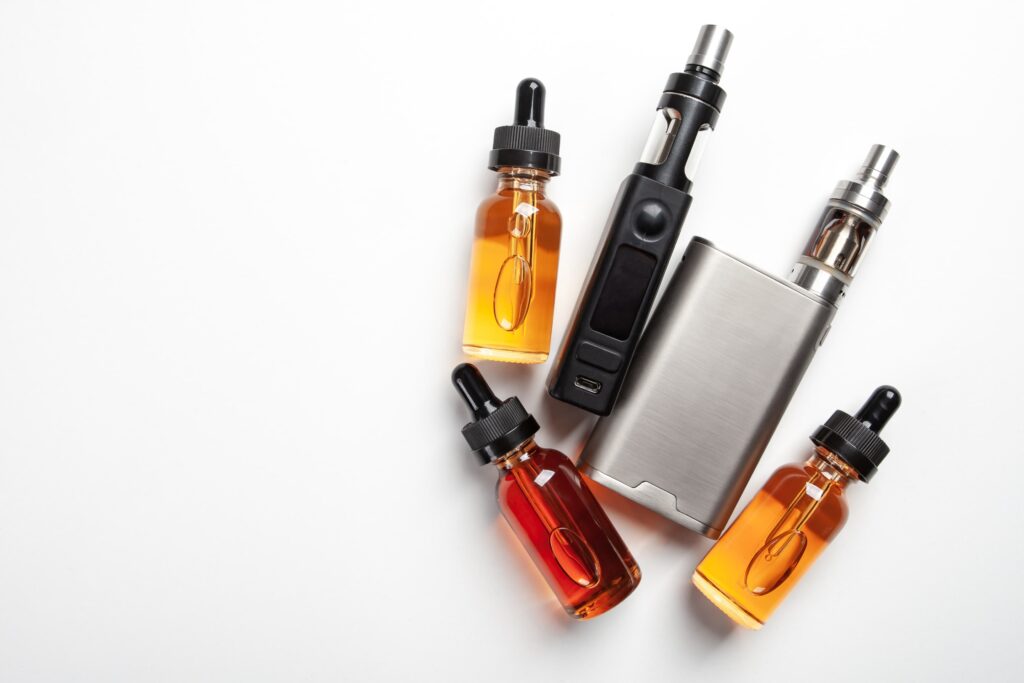Vaping is becoming an increasingly popular way to consume nicotine, and many people are under the impression that it is a safer alternative to smoking cigarettes. However, many people are unaware of the potential risks associated with vaping, especially when it comes to oral health. In this blog post, we will discuss the effects that vaping can have on your teeth and gums. We will also provide some tips for how to reduce these risks. Keep reading to learn more!
What is Vaping?

Vaping is the act of inhaling and exhaling vapor produced by an electronic cigarette or similar device. The vapor typically contains nicotine, propylene glycol, flavors, and other chemicals.
Although commonly compared to smoking cigarettes, vaping is a different activity. Smoking cigarettes involves burning tobacco and inhaling the smoke. Vaping does not involve burning tobacco. Instead, an electronic cigarette or similar device is used to vaporize a liquid mixture so that it can be inhaled. The difference between the two is why some people think that vaping is a safer alternative to cigarettes.
Some research confirms this belief by postulating that the oral health effects of vaping may be less than those associated with smoking. However, there is limited evidence to support this theory, and much is still being learned about the long-term effects of vaping. In any case, there are still risks associated with vaping.
How Does Vaping Affect Oral Health?
There are a few different ways that vaping can affect your oral health. These include:
Dry Mouth:
Vaping can cause dry mouth, which is a condition in which your saliva glands do not produce enough saliva. Saliva is necessary to regulate pH and bacterial levels in the mouth, so a decrease in saliva production can lead to an increase in cavities and gum disease.
Tooth Decay:
The nicotine in vape juice can contribute to tooth decay because nicotine increases plaque accumulation and the amount of bacteria in the mouth. In addition, the propylene glycol in vape juice can break down into lactic acid, which can also damage your teeth.

Stained Teeth:
The nicotine and propylene glycol in vape juice can both cause stains on your teeth. Nicotine, in particular, has been known to turn yellow when exposed to oxygen. Even in vapor form, nicotine can stain your teeth. In addition, the flavors in vape juice can also cause staining.
Gum Disease:
Vaping can contribute to gum disease by causing inflammation and irritation of the gums. In addition, the nicotine in vape juice can decrease blood flow to the gums, which can also lead to gum disease.
Bad Breath:
Vaping can cause bad breath due to the presence of propylene glycol and other chemicals in vape juice. In addition, dry mouth can also contribute to bad breath.
How to Reduce the Risks of Vaping
There are a few things you can do to reduce the risks associated with vaping. First, make sure to drink plenty of water to keep your mouth hydrated. Second, avoid using vape juice with high levels of nicotine or propylene glycol. Finally, brush and floss your teeth regularly to remove any build-up of vape juice on your teeth.
In Conclusion
Vaping is becoming increasingly popular, especially among young people. However, it is important to be aware of the potential risks associated with vaping. In this blog post, we have discussed some of the ways that vaping can affect your oral health. We hope that this information has been helpful and that you will take steps to reduce the risks associated with vaping. Thanks for reading!

Dr. Admar holds dual certificates — a Bachelor of Dental Surgery (BDS) in 2010 from India and a Doctor of Dental Surgery (DDS) in 2014 from Canada. He is now a full time practicing dentist in Kamloops where he provides a variety of services, including emergency dentistry. Dr. Admar spends hundreds of hours in continued dental education to stay up to date in cosmetic and implant dentistry and he has achieved several advanced qualifications.


